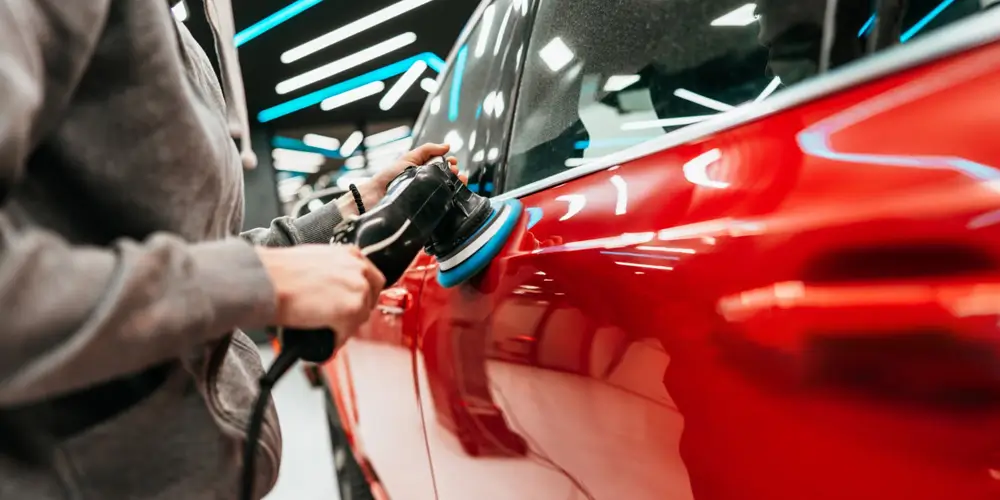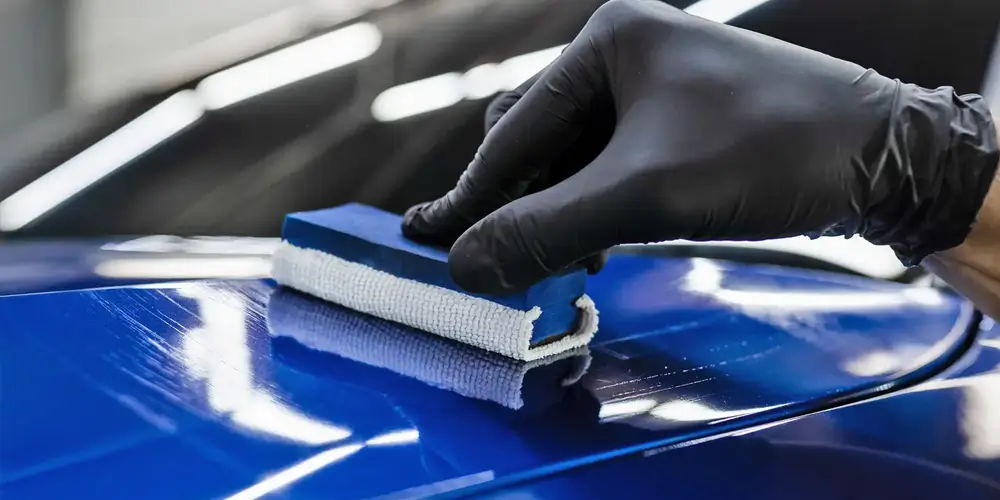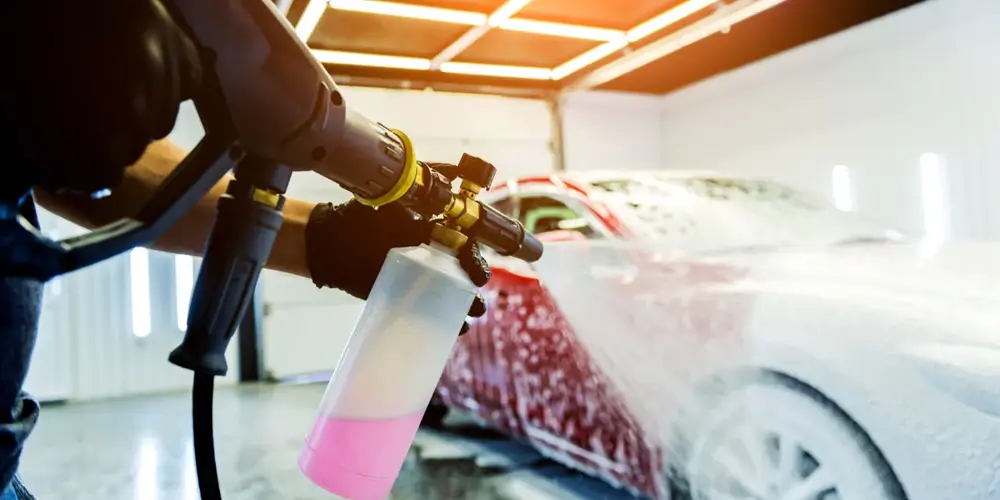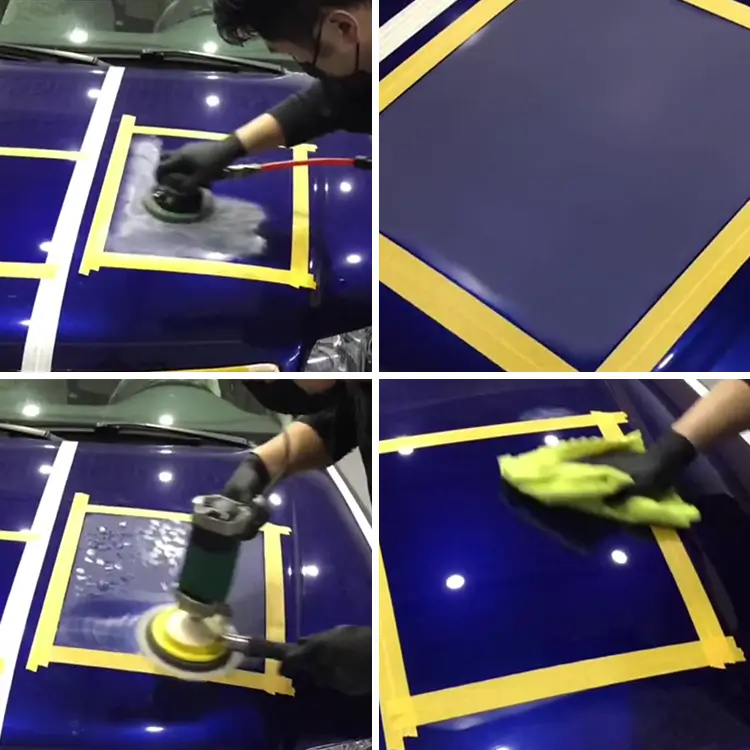Orange Peel Polishing Compound
In the automotive world, achieving a flawless finish is a mark of expertise and attention to detail. However, one common issue that can detract from this perfect finish is orange peel. Orange peel is a term used to describe an uneven, dimpled texture on a car’s painted surface that resembles the skin of an orange. This texture can occur during the painting process, whether in a factory setting or during a repaint job. It is typically the result of improper paint application, including issues such as incorrect spray gun settings, paint viscosity, or ambient conditions during drying. While it doesn't necessarily affect the durability of the paint, orange peel significantly impacts the visual aesthetics of a vehicle, making it appear less smooth and polished.
The Role of Orange Peel Polishing Compounds
To address the issue of orange peel, auto detailing professionals turn to specialized products known as orange peel polishing compounds. These compounds are designed to level the surface of the paint, smoothing out the uneven texture and restoring a high-gloss finish. The process of using these compounds requires skill and precision, as it involves carefully abrading the top layer of the paint to achieve uniformity without causing damage.
Choosing the Right Orange Peel Polishing Compound
Selecting the appropriate orange peel polishing compound is crucial for achieving the desired results. Various factors need to be considered, including the type of paint, the severity of the orange peel, and the desired level of finish. Some compounds are more aggressive, designed for heavy cutting to tackle significant orange peel, while others are finer, meant for finishing and bringing out the gloss.
Factors to Consider
1. Paint Type: Different paints, such as single-stage or clear coat systems, respond differently to polishing compounds. It’s essential to choose a compound compatible with the specific type of paint used on the vehicle.
2. Severity of Orange Peel: The extent of the orange peel will determine the aggressiveness of the compound needed. For severe orange peel, a more abrasive compound may be required initially, followed by finer compounds for finishing.
3. Desired Finish: The end goal, whether it is a high-gloss showroom finish or a more functional, everyday polish, will influence the choice of compounds and the polishing process.
Application Techniques for Optimal Results
Using an orange peel polishing compound effectively requires not only the right product but also the right technique. Here are the steps to achieve optimal results:
Preparation
1. Clean the Surface: Ensure the car’s surface is thoroughly cleaned to remove any dirt, grease, or contaminants that could interfere with the polishing process.
2. Assess the Surface: Identify areas with orange peel and determine the severity to plan the polishing process accordingly.
Polishing Process
1. Select the Polishing Pad: Depending on the compound and the severity of the orange peel, choose an appropriate polishing pad. Foam pads are generally used for finer compounds, while wool pads may be better for more aggressive cutting.
2. Apply the Compound: Apply a small amount of the orange peel polishing compound to the pad or directly to the car’s surface.
3. Polish in Sections: Work in small sections to ensure even coverage and control. Use a dual-action polisher or a rotary polisher, maintaining consistent pressure and speed.
4. Monitor Progress: Frequently check the surface to monitor the progress. Adjust the pressure, speed, or compound as needed to achieve the desired level of smoothness.
5. Finishing: Once the orange peel is leveled, switch to a finer compound and pad to bring out the high-gloss finish. This step is crucial for eliminating any micro-marring caused by the initial polishing.
Post-Polishing Care
After the orange peel has been successfully removed, it’s important to protect the newly polished surface. Applying a high-quality wax or sealant will not only enhance the gloss but also provide a protective layer against environmental elements and future imperfections.
Benefits of Using Orange Peel Polishing Compounds
Enhanced Appearance
The most obvious benefit of using orange peel polishing compounds is the significant improvement in the vehicle’s appearance. A smooth, glossy finish not only looks more attractive but also reflects the quality of the workmanship involved.
Increased Resale Value
For those looking to sell their vehicle, a flawless paint finish can substantially increase its resale value. Potential buyers are more likely to be impressed by a car that looks well-maintained and professionally detailed.
Customer Satisfaction
For auto detailing shops and repair centers, delivering a vehicle with a perfect finish ensures higher customer satisfaction. Happy customers are more likely to return for future services and recommend the business to others.
Professional Reputation
Using high-quality orange peel polishing compounds and achieving excellent results can enhance the reputation of an auto detailing business. It showcases the expertise and dedication to providing top-notch services.
Conclusion: Achieving Perfection with SYBON's Orange Peel Polishing Compounds
At SYBON, we understand the importance of achieving a flawless finish. As a leading supplier of auto detailing products, we offer a range of high-quality orange peel polishing compounds designed to meet the diverse needs of our customers. Whether you are a car detailing shop owner, an auto repair center, or an import wholesaler, our products can help you achieve professional results.
Partner with SYBON
If you are interested in partnering with SYBON for your auto detailing supply needs, we invite you to get in touch with us. Our team is dedicated to providing exceptional products and services to help your business succeed. Visit our website and fill out the contact form to start a collaboration that will bring perfection to every car you work on.
Source of this article:https://www.sybonbest.com
Get to know us through more channels:




